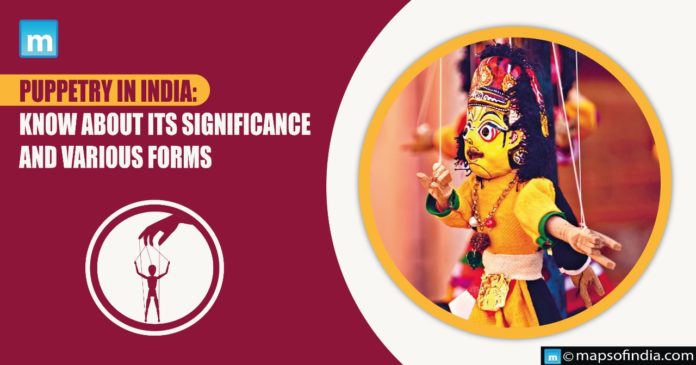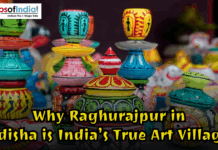A puppet is among man’s most astounding and creative inventions. According to claims, it is much more than his live counterpart since the suggestive aspect of a puppet is more engaging and durable. Puttalika and Puttika are Sanskrit terms that signify “tiny sons.” Puppet derives from the Latin term ‘Pupa,’ a doll. India is known as the land of puppets, yet it has yet to realise its full potential. The first mention of puppetry appears in the Tamil epic ‘Silappadikaaram,’ written about the first or second century B.C.
India has almost every sort of puppet. Puppetry has always played an essential role in traditional entertainment. Themes for puppet theatre, like conventional theatre, are typically based on epics and tales. Puppets from various areas of the country have unique features. They mirror regional painting and sculpting techniques.
There are various forms of puppetry followed all over the country.
Mentioned below are its four types with examples and their regions:
Glove Puppetry: Glove puppets are also called sleeve puppets, hand puppets, and palm puppets. The head comprises papier mache, fabric, or wood and has two hands that emerge from right below the neck. The remaining part of the body is made up of a lengthy flowing skirt. These puppets resemble limp dolls, yet in the hands of a skilled puppeteer, they can produce a broad range of motions.
| Pavakoothu | Kerala |
| Beni Putul | West bengal |
| Sakhi Kundhaei Nata | Odisha |
String Puppetry: String puppets or marionettes have a long, illustrious history in India with more flexibility and expression. It has flourished in Rajasthan, Orissa, Karnataka and Tamil Nadu.
| Kundhei | Odisha |
| Kathputli | Rajasthan |
| Gombeyatta | Karnataka |
| Bommalattam | Tamil Nadu |
Shadow Puppetry: India offers various shadow puppet kinds and styles. Shadow puppets are two-dimensional figures. They’re made of leather that’s been processed to make them transparent. Shadow puppets are forced against the screen, with a powerful light source behind them. The interaction between the light and the screen creates silhouettes of colourful shadows for the viewers who sit in front of the screen. Shadow puppetry is still practised in Orissa. Kerala, Karnataka, Maharashtra, and Tamil Nadu are also states contributing.
| Togalu Gombeyaata | Karnataka |
| Tholu Bommalata | Andhra Pradesh |
| Ravana Chhaya | Odisha |
Rod Puppetry: Rod puppets are a bigger version of glove puppets supported and handled by rods from underneath. This type of puppetry is now largely prevalent in West Bengal and Odisha.
| Putul Naach | West Bengal and Assam |
| Yampuri | Bihar |
Present scenario: People in modern India are increasingly turning to virtual forms of entertainment rather than traditional forms such as puppetry. As a result, the kinds above puppetry are on the verge of extinction. Nonetheless, Putul Naach, a rod puppet from West Bengal, played an essential role in raising awareness about the COVID-19 virus in Assam.




